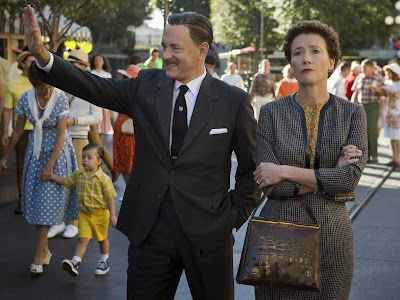Christopher Hampson's first production for Scottish Ballet employs a modern retelling of the sinister and cannibalistic Grimms tale. This version of Hansel and Gretel takes place in an unnamed town in the 1950s where children have strangely been disappearing and only the central siblings’ remain.
Gary Harris' Disney-esque set design, complete with intentionally naive and child-like illustrations is captivating and so are the lives depicted within it. Hansel (Constant Vigier) and Gretel (Sophie Martin)’s fractious but ultimately devoted relationship is well-done and Hampson has gone to great lengths to make them seem like real children by incorporating oversized furniture and ensuring that never stand up next to their parents. However, his efforts were undermined when they dance with real children at the end. There’s a vulnerability to Martin’s performance which is just right for Gretel who has given herself the role of looking after her less domineering brother. Bethany Kingsley-Garner’s appearance as the delicate Dew Drop Fairy in Act Two, complete with sparkly tutu-clad Fairy attendants, is entertaining as well as visually stunning.
There is an irony and innocence surrounding the production from the set to the costumes and plot itself. Caught up in the child-like wonderment of an all-you-can-eat buffet of your dreams, Hansel and Gretel fail to notice that the witch’s house has bars on the windows in the same way that they fail to recognise the witch herself as their former school teacher. In some respects, Hampson sugar-coats the creepier psychological aspects of the original tale with the inclusion of an array of waiters, chefs and rag dolls. However, Daniel Davidson’s villainous Sandman (his costume was inspired by Johnny Depp in Sleepy Hollow) is perhaps even more disturbing than the pantomime-scary witch.
Humperdinck’s melodic score is combined with other music, including a section from his opera, Sleeping Beauty. The absence of an evil step-mother adds another unique element to Hampson's production. Instead, we are presented with flawed but ultimately endearing parents (Luciana Ravizzi and Christopher Harrison) who squabble over cigarettes and alcohol in the same way that their children later argue over a teddy-bear.
Humperdinck’s melodic score is combined with other music, including a section from his opera, Sleeping Beauty. The absence of an evil step-mother adds another unique element to Hampson's production. Instead, we are presented with flawed but ultimately endearing parents (Luciana Ravizzi and Christopher Harrison) who squabble over cigarettes and alcohol in the same way that their children later argue over a teddy-bear.
Hampson’s narrative does not offer much opportunity for large-scale ensemble pieces, meaning that most of the production revolves around the hero and heroine. It’s a wonder that Scottish Ballet is the first company to produce a full-length ballet of this beautifully twisted fairy tale.













